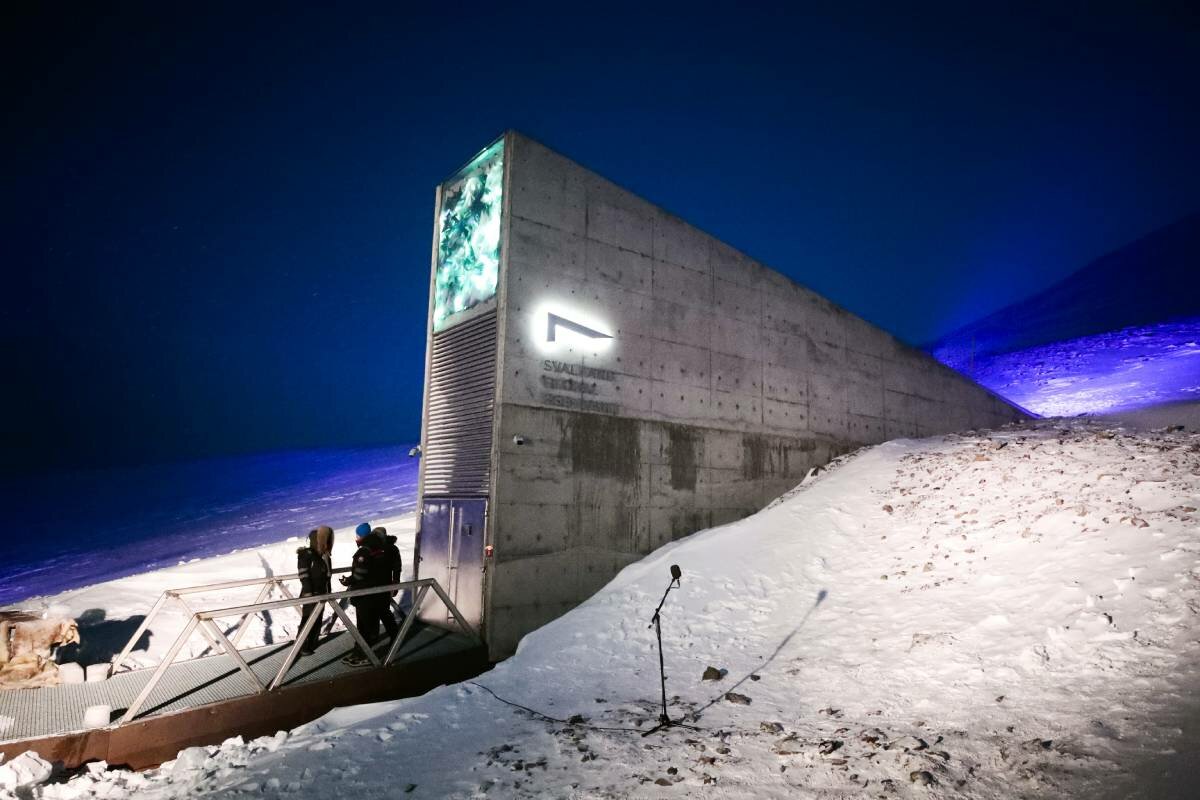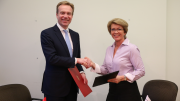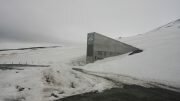Tucked away in a far-off mountain on a secluded island that is part of the Svalbard archipelago, the Global Seed Vault proudly braves the elements.
The Vault, intended to serve as humanity’s long-term storage facility for seeds, holds the most extensive collection of crop diversity in the world – more than 1.1 million seed samples from around 6,000 plant species.
The Svalbard Global Seed Vault has one overarching goal – to safeguard global food security.
With such an important mission, the storage facility was designed and built to be disaster-proof – both in terms of natural and human-made disasters.
However, even places located in the far north of the world, such as Svalbard, aren’t entirely immune to major processes such as climate change – several years ago, the Vault experienced flooding as permafrost melted.
So, what has been done to make sure that the Svalbard Global Seed Vault can cope with the challenges associated with climate change? As the Vault is owned and administered by the Ministry of Agriculture and Food on behalf of Norway, Norway Today reached out to the Norwegian authorities to find out the latest updates related to the vault’s status and operations.
Making sure that the vault stays disaster-proof
In an e-mail, Norway’s Development Minister Anne Beathe Tvinnereim assured Norway Today that an important technical upgrade of the vault was finalized in 2019.
“In 2019, Norway finalized a technical upgrade of the Svalbard Global Seed Vault. This upgrade involved a new waterproof entrance tunnel, strengthened security measures, and an upgraded operating system.
“The permafrost around the vault is currently restored. The Norwegian Ministry of Agriculture and Food (LMD) will continue to monitor the Seed Vault and follow the developments in the climatic and natural conditions on Svalbard to make sure the seeds remain safe,” Tvinnereim noted.
Stefan Schmitz, the executive director of Crop Trust (which provides support for the ongoing operations of the vault), says that Norway is committed to maintaining the facility.
“As far as we know, as seen first by building the Seed Vault and then by upgrading it, Norway is committed to making sure this unique structure houses the back-up copies of the world’s crop diversity safely and for the long term,” Schmitz pointed out in an e-mail to Norway Today.
A symbol of unity in uncertain times
The Vault’s purpose is to serve as a back-up storage facility, storing duplicates of seed samples from the world’s crop collections.
At the same time, it plays a symbolic role as a place where different countries can come together, put short-term disputes aside, and work on long-term issues. This role is of particular importance with the security challenges that Europe is currently facing.
“The Seed Vault represents hope and unity. Countries that may not see eye to eye on the global political stage store their seeds here in peace. The countries that deposit their seeds there are backing up their cultural heritage, the ingredients of a food and nutrition-secure future for all of us and that of our children and grandchildren.
“There are challenges ahead of us, and we need this hope, this belief that the world can come together to do what’s right and what’s required to secure our future food supply for generations to come. The Seed Vault gives us hope that we can put aside our differences to focus on what’s most important – the conservation of our biodiversity, and within that, our agrobiodiversity.
“The diversity found in our seeds is irreplaceable, and once it is lost, so are the options to shock-proof our agriculture. And it is not just seeds that are safeguarded within, it is our future,” Schmitz told Norway Today.

Key seed deposit took place a week before the start of the war in Ukraine
In mid-February when 22,000 new seed samples from Australia, New Zealand, Africa, the Middle East, and Europe were added to the vault.
“The Svalbard Global Seed Vault is the extra back-up for national, regional, and international seed banks. It is an additional insurance for global food security – and with the International Center for Agricultural Research in the Dry Areas (ICARDA) withdrawal and now deposit of seeds, we know that it works. Hence, the very important role of the vault, both for Norway, the Nordic countries, and for the world, is that it protects the foundation for global food security, namely the seed,” Tvinnereim explained.
Roughly a week after the deposit was made, the war in Ukraine started.
“It is all too evident that the global food system is vulnerable, and increasingly so. Already, 811 million people are hungry on a daily basis. Further climate changes will intensify the need to access different seeds that can withstand new and more extreme weather. We can also only barely imagine which long-term implications the war in Ukraine will carry for global food security.
“As for the Global Seed Vault, it is an insurance for the future. The genetic diversity of seeds is a key ingredient in global food security. Both local and regional seed banks play a crucial role. Preserving and using local seeds safeguard local food production. Each deposit to the Svalbard Global Seed Vault contributes to enhancing future global food security,” Tvinnereim added.
Supporting crop diversity
The Seed Vault’s disaster defenses are, according to both the Norwegian authorities and the Crop Trust, up to date – at least for the time being.
So what can the international community do to support crop diversity?
“The international community need not worry about the Seed Vault. Instead, we urge and invite them to help us make sure the crop diversity we all need to build resilience to future threats to our agriculture – that which is housed and made available in genebanks – is with us today and tomorrow.
“They can do their part by supporting the Crop Trust’s endowment fund, which provides the means to keep genebanks running in optimal conditions,” Schmitz concluded.
Source : #Norway Today / #NorwayTodayNews
Do you have a news tip for Norway Today? We want to hear it. Get in touch at [email protected]




Isn’t the vault someday going to have to be moved to higher ground because of the rising sea?